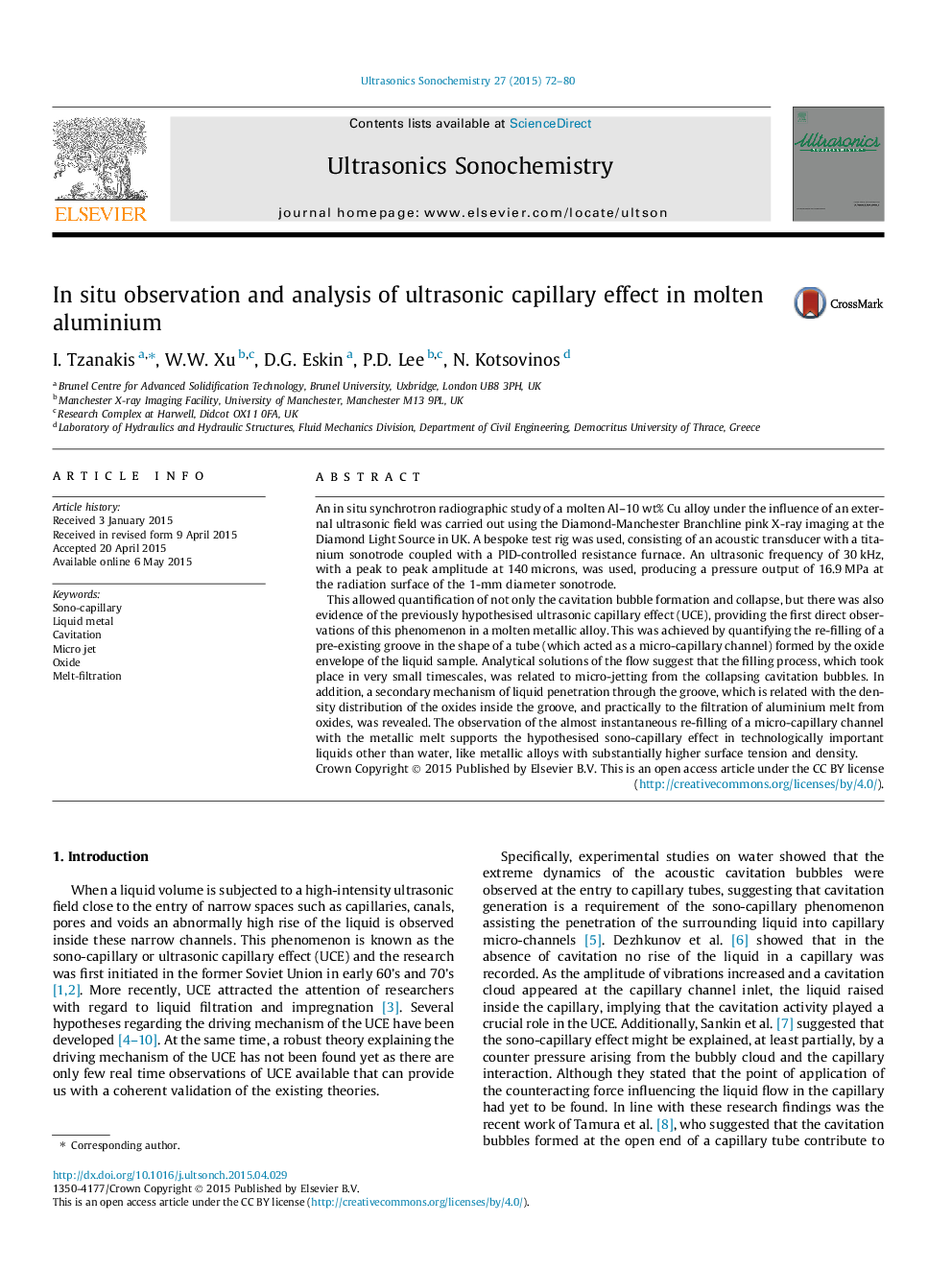| Article ID | Journal | Published Year | Pages | File Type |
|---|---|---|---|---|
| 7703773 | Ultrasonics Sonochemistry | 2015 | 9 Pages |
Abstract
This allowed quantification of not only the cavitation bubble formation and collapse, but there was also evidence of the previously hypothesised ultrasonic capillary effect (UCE), providing the first direct observations of this phenomenon in a molten metallic alloy. This was achieved by quantifying the re-filling of a pre-existing groove in the shape of a tube (which acted as a micro-capillary channel) formed by the oxide envelope of the liquid sample. Analytical solutions of the flow suggest that the filling process, which took place in very small timescales, was related to micro-jetting from the collapsing cavitation bubbles. In addition, a secondary mechanism of liquid penetration through the groove, which is related with the density distribution of the oxides inside the groove, and practically to the filtration of aluminium melt from oxides, was revealed. The observation of the almost instantaneous re-filling of a micro-capillary channel with the metallic melt supports the hypothesised sono-capillary effect in technologically important liquids other than water, like metallic alloys with substantially higher surface tension and density.
Keywords
Related Topics
Physical Sciences and Engineering
Chemistry
Chemistry (General)
Authors
I. Tzanakis, W.W. Xu, D.G. Eskin, P.D. Lee, N. Kotsovinos,
